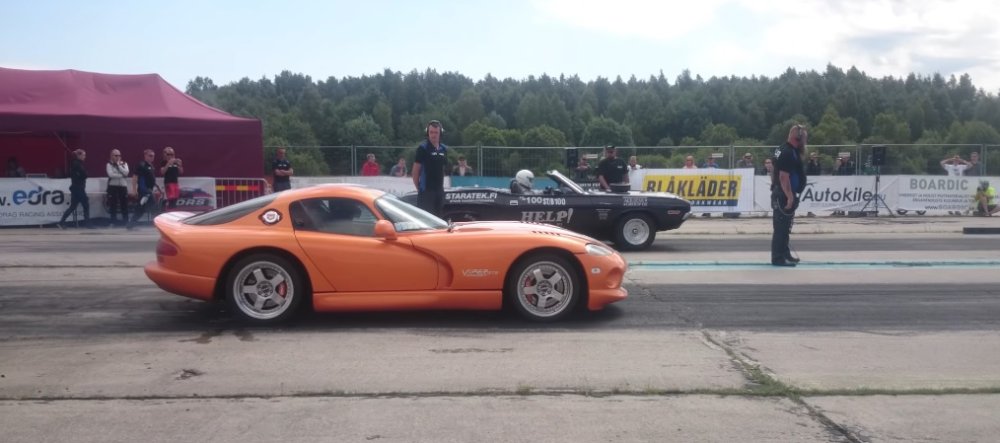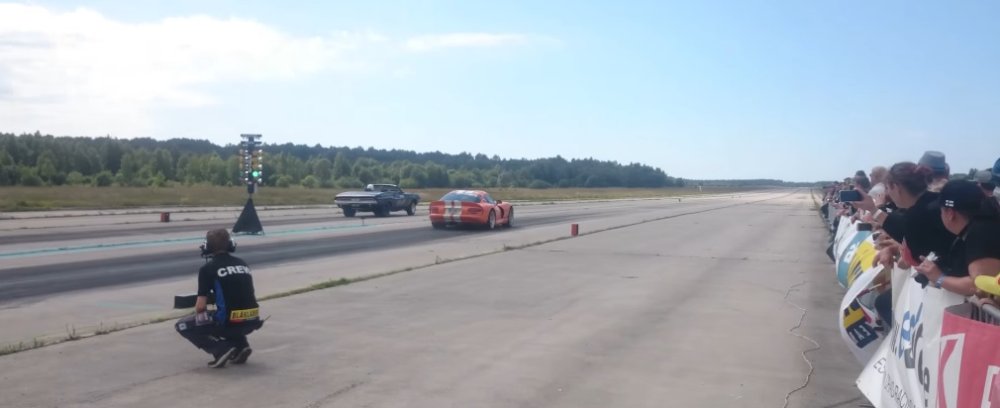Viper and Challenger Battle for Mopar Supremacy: Track Time Tuesday
Viper has to run down the drop-top Challenger after a shaky start.
The Dodge Challenger was one of the greatest muscle cars of the 1970s and when the model returned in the 2000s, it has proven to be one of the top American performance cars of the modern era. The Dodge Viper has been the ultimate in Mopar performance since the beginning of the 1990s, serving as one of the world’s top sports cars in a brand that is best-known for muscle cars.
This week’s Track Time Tuesday video pits a classic Challenger against a Viper, but neither car is stock. This footage comes to us from the BalticMotorSport YouTube channel and it showcases these two historic American performance machines battling it out at the Haapsalu, Kiltsi airfield during the Estonia Drag Racing Association Nationals back in 2018.
Dodge Duelers
The details on these two Dodge performance cars are brief, but we have the key points for each of these machines.

In the far lane, we have a 1970 Dodge Challenger Convertible, driven by Marko Tuomela. This classic drop-top is powered by a 520-cubic inch stroked motor which is said to yield more than 550 horsepower.
In the near lane, we have a 1998 Dodge Viper GTS, driven by Georg Noor. It is powered by an 8.0-liter V10 that has been fitted with an aftermarket twin turbocharger setup, yielding over 1,000 horsepower. This car likely weighs less than the Challenger along with having nearly twice as much power, but there are a few key variables here.
The Challenger sounds as though it is equipped with an automatic transmission while the Viper is definitely packing a manual. Also, the Challenger has Hoosier drag racing tires out back, while the Viper appears to have uniform front and rear tires. This means that the orange sports car likely lacks the kind of rubber needed to launch hard on the drag strip with over 1,000 horsepower.

Challenger Vs Viper
The video begins with lackluster burnouts by each machine, with the Challenger appearing to get the rear rubber a touch hotter. Both drivers would have benefitted from longer, smokier burnouts on this bare-looking track.
Each of these modified Dodge performance cars ease into the starting beams and their engines roar. As the green lights drop, the Challenger hops out of the hole first, taking an early lead while the Viper struggles for traction. The convertible spins the tires a bit on the launch as well, but it gets enough traction to grab the early lead.
Once the Viper has traction and the driver begins banging through the gears, we can see that the sports car quickly catches the muscle car, but it is hard to see who crosses the finish line first. Fortunately, the video ends with a look at the elapsed times for each of these cars, neither of which is very good by modern American standards.

The Challenger runs a 12.634 at 98 miles per hour while the Viper runs a 12.578 at 98 miles per hour. Frankly, we think that the timing system must be different from ours, as there is no way that a 1,000-horsepower Viper only trapped 98 mph in the quarter-mile. The slow elapsed times with the sketchy footing makes sense but we would guess that with an American timing system, these cars would have both turned in a much higher trap speed.
Crank up your speakers and enjoy!
